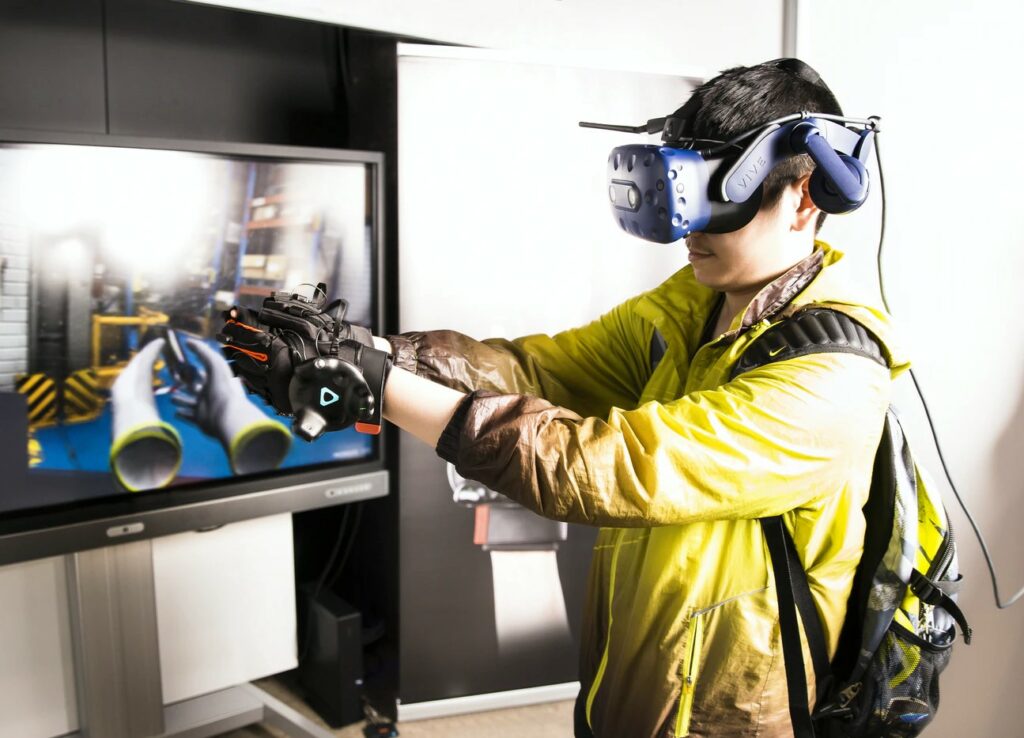
Augmented Reality in the nuclear industry
Today, we look at AR and its potential in the nuclear sector. Can this promising technology improve the efficiency and the safety in the nuclear sector?
The AR family?
There is indeed much talk about Augmented Reality (AR) as part of an Industry 4.0 model but, to clear things up, AR is only one way to modify reality and Extended Reality (XR) represents the family of options.
Yes, XR covers the full spectrum of real and virtual environments and is the overall term covering Virtual Reality (VR), Augmented Reality (AR), and Mixed Reality (MR). I will refer to AR here but truly XR is the new global acronym englobing:
Augmented Reality (AR) adds digital elements to a live view. With AR, objects that reside in the real world are enhanced by computer-generated information. It has made is mainstream debut in games (Pokémon Go!, Snapchat lenses…), other consumer-based visualisation app (rendering products in 3D in real environment and in real-time, i.e., see what furniture will look like in your home before buying it) or even guiding customers on how to build that Ikea wardrobe!
AR provides the feeling that the virtual objects exist in the real environment and allows a more spontaneous understanding than when using other interfaces such as paper-based or two-dimensional displays for instance. AR is somehow an enhanced way to display information.
Then there is Virtual Reality (VR), which implies a complete immersion experience outside of the physical world. Using VR devices (Oculus Rift, Magic Leap…), users can be transported into a number of real or made-up-world environments with no remaining link with your current real world.
Mixed Reality (MR) combines elements of AR and VR. With MR, real-world and digital objects interact, you have the ability to scan the physical environment (existing machinery or equipment), add digital information or holographic objects seamlessly and interact with them.
Augmented Reality for the nuclear industry?
Some forms of AR are currently being used by big companies like aeronautics, car manufacturer or shipbuilding (for planning, retrofitting or testing of prototypes). The great It allows them to process the data more intuitively and hence saves time and money.
Industrial uses of AR could be many, even for the industrial sector. AR could allow you to replace your existing environment and create an environment that you can’t show or is too dangerous to access in the real-world. It could also provide information that helps optimize your workforce, i.e., allowing a worker to have head’s up display at any time when they need it, making a training session more interactive and can even help sharing your environment with others to create a virtual collaboration space… From navigating workers around facilities, indicating dangerous locations, making invisible plant parameters visible So, the short answer is yes, these new technologies can definitively help the nuclear sector.
How difficult can it be?
Somehow, when it comes to AR and its potential in the nuclear sector, the future use of AR is linked with key developments: integration tools and vision systems being essential part of those key areas to watch.
Indeed, integrating AR into legacy systems (old companies) can be complex. Facilities are often one-offs, often operated differently… and all of this makes it challenging for AR to integrate process effortlessly.
Further to that, computer vision is evolving fast. Tracking by detection and object recognition tools are getting better every day. Computer vision often uses marker-based tracking or common visual features of the landscape (a door, a window, a desk…). In an industrial context, placing markers in and measure their 3D positions in advance is a burden. New depth-sensing cameras are now beginning to make markers unnecessary and will allow image-processing techniques to make tracking easier in real time.
These major improvements are paving the way for AR to finally answer the expectations of challenging industrial sectors such as nuclear decommissioning. So, , well, soon you might be going to your next augmented reality meeting as naturally as you would do today of your teleconference meeting.
Do you think AR could be useful for the nuclear industry? Do you have another point of view? If you’re interested in this type of technology, you should definitely subscribe to our newsletter. We feature COTS technologies that have been demonstrated in a nuclear environment.
Share your thoughts and tell us what you think at www.intechbrew.com or through our LinkedIn page.




